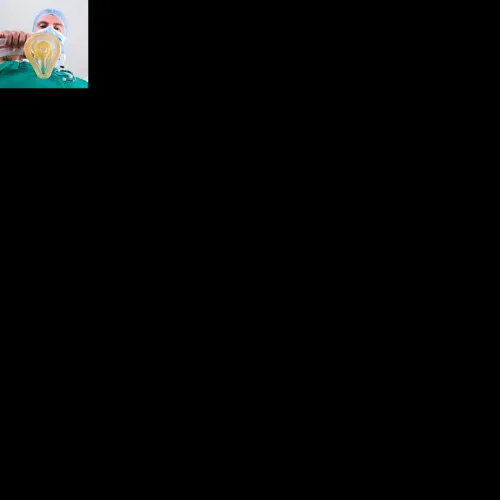Pulmonology: Look to E/M Documentation for PAP Approvals
And document compliance with follow-up E/M. Positive airway pressure (PAP) devices can be a godsend to patients with obstructive sleep apnea (OSA). But they can also be a nightmare if your documentation doesn't support coverage. So says Michael Hanna, MPA, CDME of CGS Medicare. In a Dec. 12, 2017, webinar, Hanna provided valuable advice to pulmonologist coders, reminding them that Medicare - and many other payers - won't cover durable medical equipment (DMEs) such as PAPs unless you provide detailed information about your physician's initial, and follow-up, evaluation and management (E/M) encounters with the patient. E/M Must Support PAP Diagnoses There is a 90-day trial period when a patient first receives his or her PAP device, Hanna said. "For us to even consider coverage for this initial or trial timeframe period for PAP devices, the beneficiary must have a face-to-face encounter with the physician before the sleep test that talks about sleep problems or sleep issues. Second, they must have a Medicare-covered sleep study," Hanna said. "And third, there must be a medically necessary diagnosis. For example, we usually see stroke, hypertension or insomnia often, but other diagnoses may be covered as well." The face-to-face clinical evaluation that takes place before the sleep study should include detailed narrative notes in the chart, Hanna said. "We might anticipate some discussion of their sleep problems, headaches, loud snoring, waking up gasping for breath, that kind of thing, as well as how long those symptoms have been going on." In addition, a validated sleep hygiene inventory will help the payer see what exactly is going on with the patient, he added. The physical exam should include a focused cardiopulmonary and upper airway system evaluation, as well as information about neck circumference and/or BMI, Hanna said. "OSA does tend to be significantly higher in our patients who are obese," he said. Explain Reasons for "Oh, By the Way" Visits In some cases, the reason the patient presents to your office may have nothing to do with sleep apnea, but you still may end up discussing it. In those, cases, thorough notes are essential. For instance, Hanna said, suppose a beneficiary comes in for a flu shot and the assessment notes end up discussing ordering a sleep test. "We need to know how you got from coming in for a flu shot to a recommendation for a sleep test. It may just be that they came in for a flu shot and complained about sleep issues and the physician said, 'Well I don't do that, I'll refer you for a sleep lab or sleep clinic.' A sleep physician can do the face-to-face encounter as long as it takes place before the sleep test. It doesn't have to be the PCP, we just need a note saying there was a clinical examination before the sleep test." Know How to Document Reevaluations Within 90 days of getting the PAP device, the patient should come back to the physician to see how they're doing. It shouldn't take place within the first month, but "we really like it to take place by day 91," Hanna said. The documentation for the reevaluation will differ from physician to physician. Hanna said. "There's nothing specific that says what must be there, but there should be a note that describes how they're doing, what kind of problems they've encountered, that sort of thing. We want to see that it was a follow-up visit to the PAP therapy." In addition, don't forget to denote how compliant the patient has been with the device, which is required by Medicare to consider coverage beyond the first three months of the trial period. "Are they using that device at least 70 percent of the time, four hours per night, within a consecutive 30-day period, and have they had a reevaluation or a follow-up with the physician where they've said their symptoms improved?" Here's How to Handle Patients Joining Medicare With PAPs For beneficiaries who received a PAP device prior to enrolling in fee-for-service Medicare and who are seeking Medicare coverage of a PAP device and/or accessories, both of the following coverage requirements must be met, Hanna said: "If you're unable to provide either of these documents in an audit situation, that claim will be denied as not reasonable and necessary," Hanna added. Avoid Blanket ABNs Many practices issue advance beneficiary notices (ABNs) for patients seeking PAP devices because they know there's a chance the payer won't end up covering it, but you should never issue blanket ABNs, Hanna said. "You've got to give the beneficiary a chance to become compliant, so the only avenue where an ABN would be valid would be right when the equipment is delivered, if the physician's order says the patient doesn't have OSA, because we know it's covered for OSA if you meet the requirements. If they don't have OSA, we might suspect they have a secondary condition that may be covered, so in that case the ABN could be acceptable." The physician should be discussing equipment compliance throughout the trial period, and should be sure to present adequate information up-front for the patient to be successful. However, if, after day 60 of using the equipment, there is knowledge that the coverage criteria are not met (i.e., download analysis shows the patient isn't being compliant and won't meet compliance standards during the initial trial period), then an ABN can be issued. Again, however, this can be prevented by having multiple compliance discussions. The ABN should advise the beneficiary that payment for the PAP and related accessories may be denied after the 90th day and the beneficiary may be liable for payment, Hanna said.



.webp)
